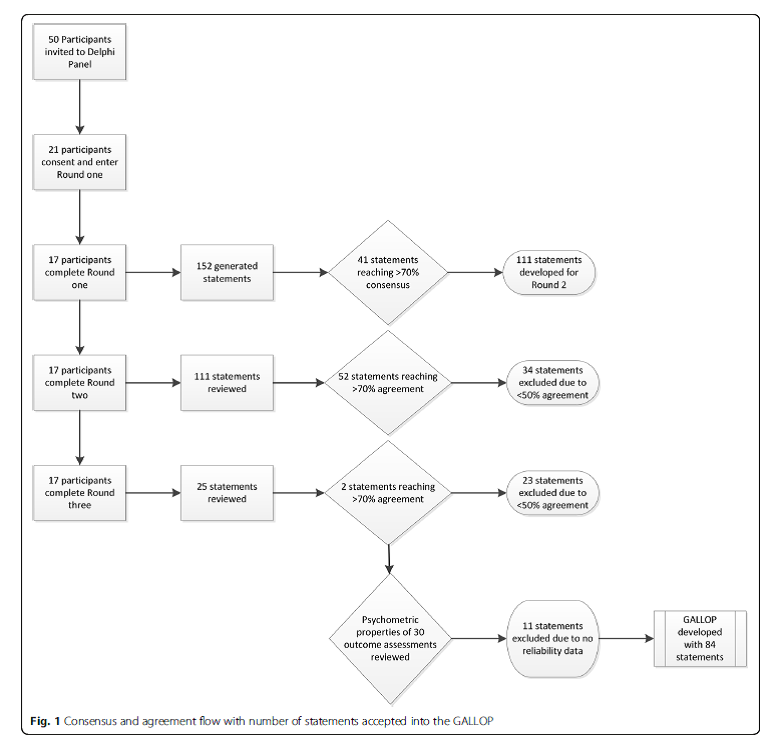Gait and Lower Limb Observation of Paediatrics - (GALLOP)
Introduction[edit | edit source]
The gait and lower limb observation of paediatrics (GALLOP) is a very new, comprehensive assessment of questions and objective measures, which was developed in 2016. Research suggests that children's gait is a frequent concern of parents and therefore they present to podiatrists and physiotherapists with their child regularly for assessments. [1] With this prevalance Peninsula Health conducted a quality assurance review across Australia, investigating what assessments involve when looking at children's gait and lower limbs amongst physiotherapists and podiatrists. It was found that there was very little consistency amongst professionals, therefore it was decided as a way of trying to standardise and developing consistency of assessments that GALLOP was produced. [2]
Development[edit | edit source]
A delphi study was conducted where 50 physiotherapist and podiatrists were invited to participate in the development of the GALLOP, but only 17 participants completed the process. These therapists were selected upon their clinical experience, background, recommendation or involvement in teaching and or researching within the field of paediatrics within Australia. There were 4 rounds to the delphi study.
Individual assessment outcomes and proformas were collected alongside a literature review of gait and lower limb assessment in paediatrics which were included in the delphi study. The reliability and paediatric norms available on the assessment techniques that reached a concensus or agreement were exacted from the study. This information was then developed into a proforma which could be easily implemented into clinical practice.
Psychometric Properties[edit | edit source]
This delphi study which produced the GALLOP highlighted that due to the number of different assessments identified in the process, the only psychometric test that was considered was the reliability, and this was on the clinican's opinion only. Due to the lack of formal critique of the psychometric relability of each individual assessment, it is therefore something to be aware of when implementing in practice. Neither was there a formal quality assessment of each of the studies included, although participants were advised to consider things such as; sample size, administration intervals, analysis of data and population group in relation to the study they were involved. Due to this proforma being such a new tool no further studies have looked into psychometric properties, therefore it can be concluded that this assessment has face vailidity only
Use[edit | edit source]
The results of the study which produced the GALLOP states that it should be considered by physiotherapists and podiatrists as a systematic approach to collect information and outcome measures related to the foot and lower limb within the paediatric population which was defined as 0-18 years of age.
Scoring[edit | edit source]
Resources[edit | edit source]
Cranage S, Banwell H, Williams CM. Gait and Lower Limb Observation of Paediatrics (GALLOP): development of a consensus based paediatric podiatry and physiotherapy standardised recording proforma. Journal of Foot and Ankle Research 2016; 9:8
References [edit | edit source]
- ↑ Evans AM, Rome K, Peet L. The foot posture index, ankle lunge test, Beighton scale and the lower limb assessment score in healthy children: a reliability study. Journal of Foot Ankle Research 2012; 5(1)
- ↑ Cranage S, Banwell H, Williams CM. Gait and Lower Limb Observation of Paediatrics (GALLOP): development of a consensus based paediatric podiatry and physiotherapy standardised recording proforma. Journal of Foot and Ankle Research 2016; 9:8







